Water is life, which was part of my motivation to search out the best under sink water filtration system. Having access to clean water is so important. I never thought I would question whether or not my water was safe to drink in a major city like Sacramento. And yet, it happened. For over a year, the local water utility was contaminating with cancer-causing chemicals the water to save money. This could happen to any residence, in any city.
In the search for the best water filtration solution for my own home, I learned a ton about what goes into filtering water and the different types of filtration available, from options such as under sink filters to a tankless reverse osmosis system. Follow along my journey from research to install. Through findings, I hope you can be guided in your own search for finding an appropriate water filtration system solution.
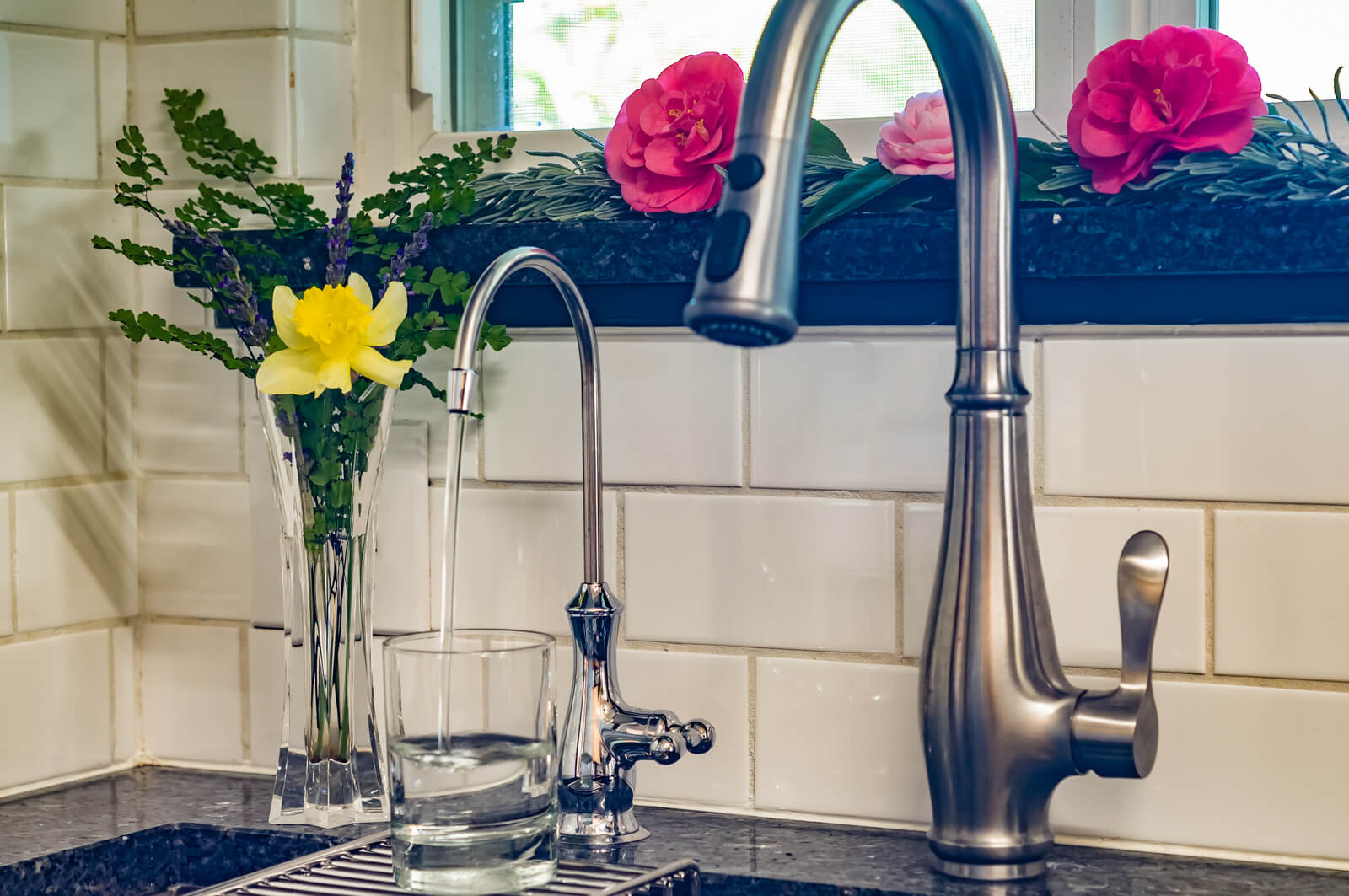
There were two very specific catalysts which bought me to the notion of needing an under sink water filtration system. The first being my pipes are from the ’60s. Installing a filter would be much cheaper than replumbing the house. Cast iron and decades of nastiness was far from appealing to drink from. Sure, I did it, but I always was aware of what my water was moving through before it went into my glass.
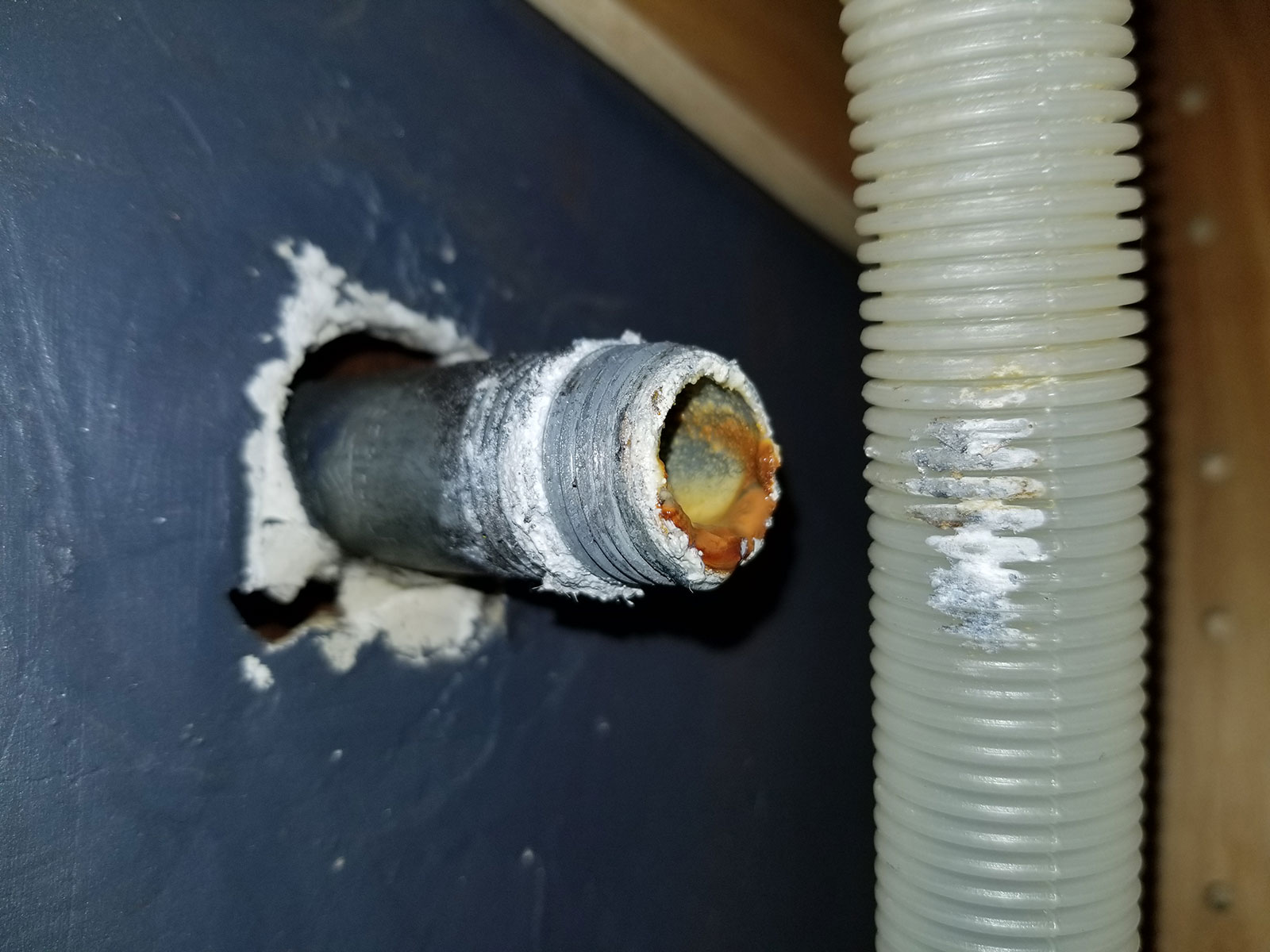
The old pipes in my house were a drop in the bucket compared to the second catalyst.
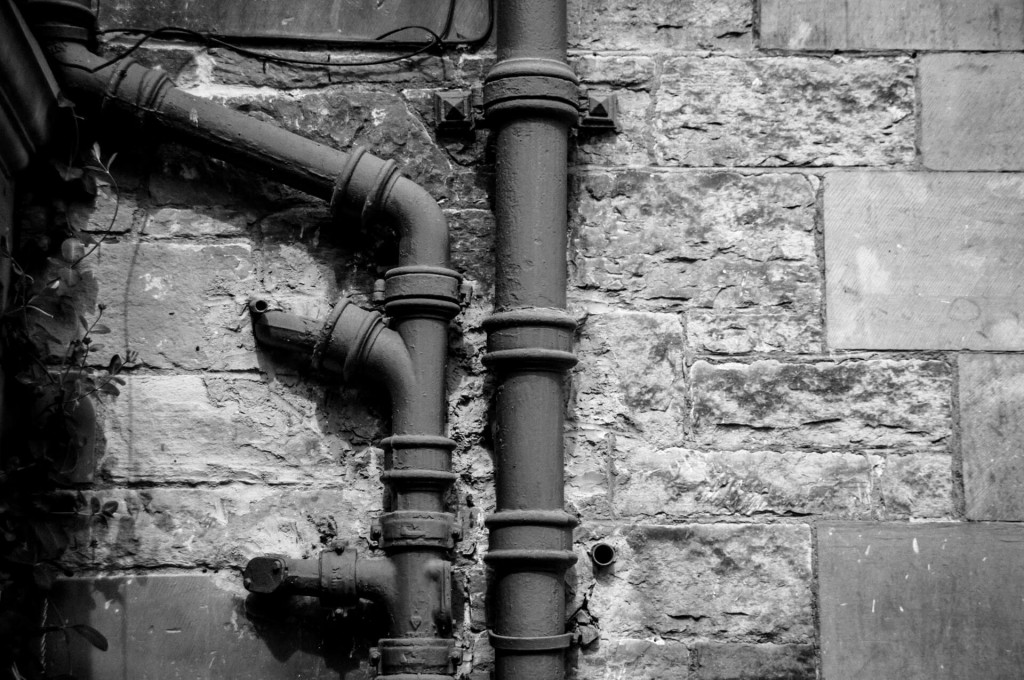
My hometown, the City of Sacramento, was caught adding a chemical to the public water supply known as aluminum chlorohydrate, or ACH. It was meant to be a temporary replacement of another chemical that ran out – ALUM. However, ACH is known to cause cancer, and the city officials decided to add it anyways and keep using it, as it was far cheaper. In fact, ACH isn’t even effective as a water treatment method.
In seeking to remedy the idiocy, the city added excess amounts of chlorine, which created an even more toxic substance. Even today, years later, most people have no idea they were being poisoned for a long period of time – over a year. If you’re a local reading this, there is a ton more information on the internet – ABC10 broke the story.
I lost trust in my local government to provide clean water. I’m far from a conspiracy theorist on clean water. I don’t live in a third world country. How is it possible I live in the United States and yet can’t trust the availability of clean water? Turns out a lot of people are in this predicament. I’m looking at you, Flint.
For the longest time, I would either reluctantly drink the tap water, or buy jugs of distilled water and plastic bottles from the local grocer. These were not ideal solutions. It was time to turn the tide and put together a well thought out permanent solution for water filtration.
The first steps were to evaluate the different methods of providing clean filtered water and eliminate until I found something I would be happy with.
Table of Contents
Potential Solutions to Clean Water Filtration
- Plastic bottles
- Refillable jugs
- Fridge filter
- Counter top filter
- Under sink filtration
- Whole house filtration
Elimination Less Than Ideal Solutions
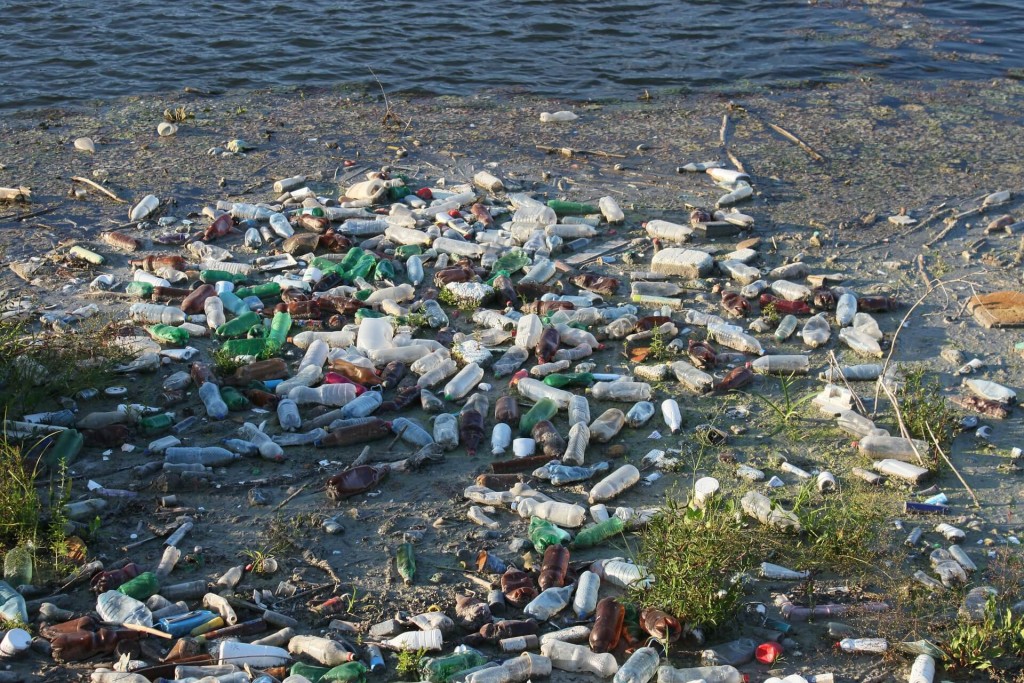
Plastic bottles were an obvious no from the start. They took up a lot of storage and were a tax on the environment. Speaking of tax – they were quite expensive with the plastic fees in California.
Refillable jugs – at around 30 cents per gallon this wasn’t cost-prohibitive, but certainly a pain to deal with. They also took up a ton of space.
Fridge filter – This may have undertaken closer evaluation on my part if my fridge’s water dispenser wasn’t broken. However, for those who have working water dispensers on their fridge – the filter provided is very basic and doesn’t filter out potential contaminants I was originally worried about. Some fridges support filters rated for NSF 42 (sediment, chlorine taste and odor) and NSF 53 (heavy metals) – but I was after something a bit more than that.
Counter top filter – Whether a standalone container or attachment to the sink faucet, I wasn’t happy with the space ramifications. Less is more. Multiple friends have a counter top filter which meets my filtration standards, but takes up either a ton of space in the fridge or on the counter. This would be my fallback and last resort if nothing else worked. As for an existing faucet attachment – I have a fancy faucet and would need to replace that unit. An extra cost which was less than ideal.
Under sink filtration – I had a limited number of holes in my granite to hook this up to – which would mean either modifying my dishwasher to remove the airgap or removing my instant-hot unit. My current dishwasher supported an airgap modification, but I couldn’t guarantee the same of future units. If I went this route, I would be removing my instant hot – a luxury, but a luxury I most likely wouldn’t utilize without an under sink filtration system.
Whole house filter – This was the most expensive solution as an upfront cost. However, the filter cost over a long term made this a possible solution. But did I need to pay for filtered water to my toilets? Does it matter for a shower? This solution would end up being dependent on the total cost in comparison to under-sink and what further research found. After a lot of reading and careful contemplating, it seemed to me a whole house filtration system would only be needed if I lived in a place with even worse sanitation or clean water availability. Who knows, the city of Sacramento could surprise me yet!
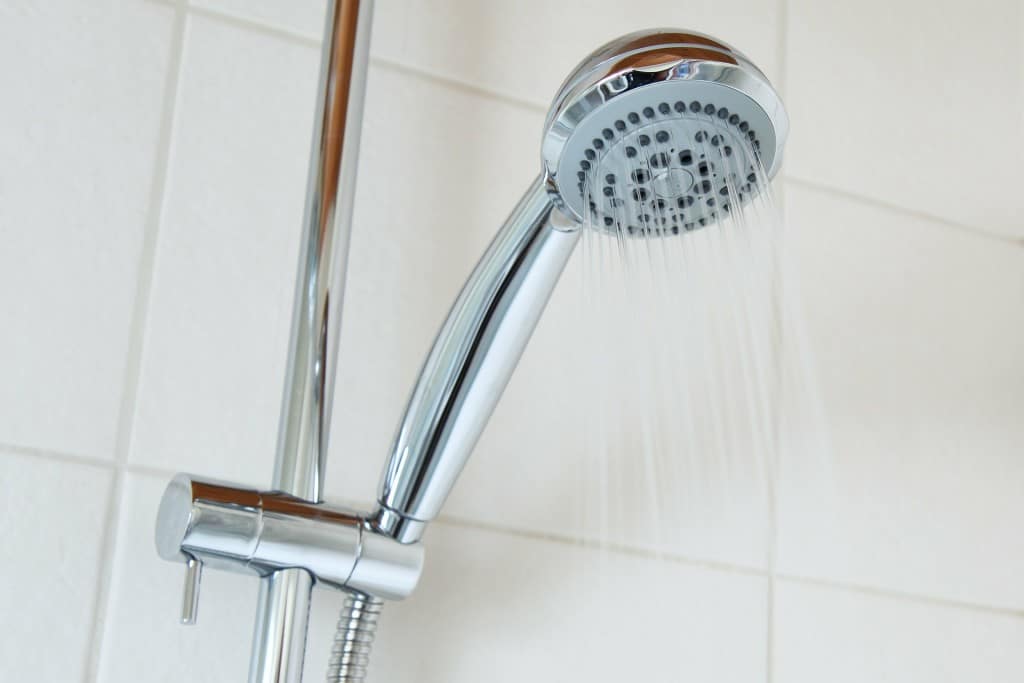
The other option was totally replacing the cast iron pipes with new plastic. However, I wasn’t ready for a complete remodel. If you have a newer home, your piping probably looks like this:
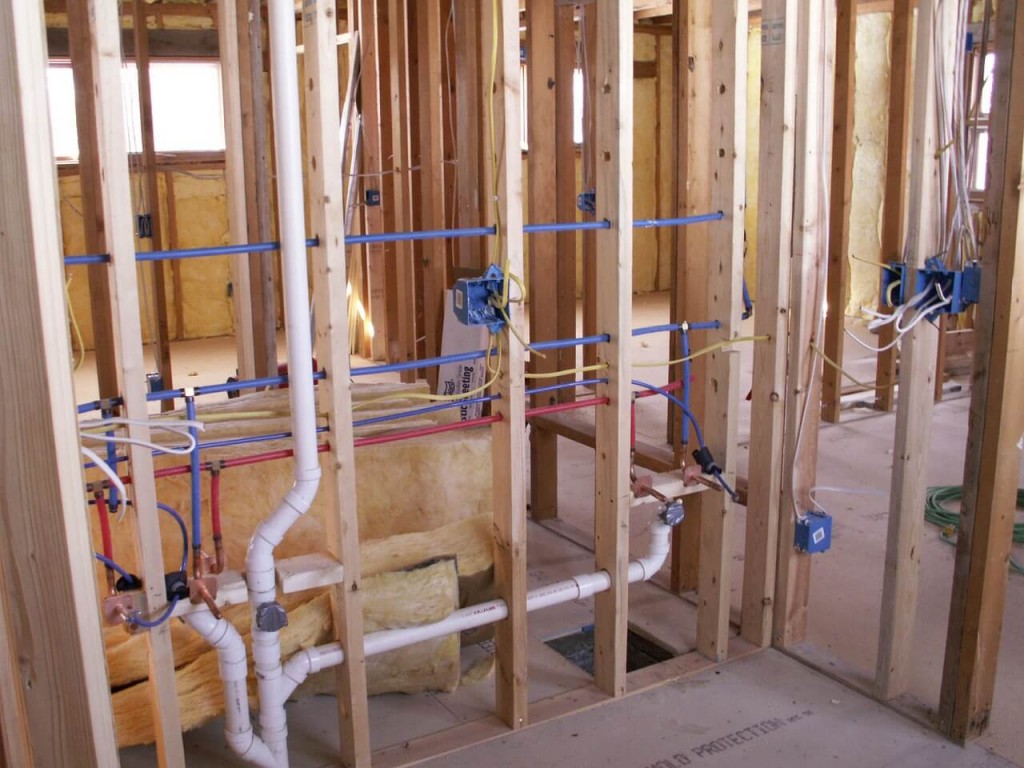
It seems that my process of evaluation has brought me to the under sink water filtration system option as being the most feasible. Now came the process of picking out the best under sink solution.
Evaluation Criteria
- Filter Life – How often filters need to be replaced.
- Filter Stages – Must be 3-5 stages.
- Flow rate – The average sink is a 2.2 gallon per minute faucet. Water filters range from 0.5 to 0.75. 0.75 GPM is ideal.
- Certifications – NSF or WQA certifications mean the water filters remove the contaminants to the exact levels claimed. NSF 401 is the best certification. This includes contaminants from pharmaceuticals in the water supply.
- Filter Cost – Based on the life of the filter and use, how much does it actually cost per gallon.
Most of the filters were anywhere from two to four stages. This filter has 15 stages built into it, but gives a good example of the different materials and which contaminants they are filtering. The filters with less stages will perform faster, and also are able to filter out these same contaminants with less stages.
Reverse Osmosis Verus Carbon Filters
Choosing between reverse osmosis for my filtration or a regular multi-stage filter was another consideration. Reverse osmosis is a process which demineralizes and deionizes water. Essentially, the water that comes out of a reverse osmosis filter is completely and 100% pure. However, I still want some of the minerals in the water. Its a health thing for us humans. This is to be my primary drinking source, and I don’t want to lose out on nutrients my body needs. I think. I’m not a scientist nor biologist, so I’m sure one of you readers will correct me in the comments. The other negative impact is the water waste reverse osmosis has. As someone who is charged for water usage, I want to eliminate as many sources of water waste as feasible.
Sediment Filters
The sediment filter is like a net that catches dirt particles as your water flows through the system. Sediment filters are designed to remove suspended solids, which are also known as sediment, turbidity, or particulate.
The sediment filter is usually attached at the point where water comes into your home. The filter will contain a bed of natural media (sand, anthracite, etc.). As the water passes through, dirt particles become trapped. The water moves into the filter and leaves the sediment behind, then out of the filter so the water coming into your home is free from particulate.
The only sediment that is trapped in the bed of natural media is removed from your water. Trace pathogen elements, heavy metals, and organic compounds can still remain in your water.
Water Filtrating Certifications, Ratings, and Standards
Browsing through different under sink water filtration systems, there are a lot of promises as to high degrees of water quality. The most important rating to look for is a NSF certification. The filter should come with a printout from NSF certifying the filter does what it claims to do. You can see which contaminants are being reduced and the amount. You can cross reference report numbers to the NSF website.
So why is the NSF so important? The National Sanitation Foundation is an international organizing dedicated to sustainability and industry standards for public health to protect the world’s food, water, consumer products, and environment. The organization is well known for having the utmost of ethics and integrity.
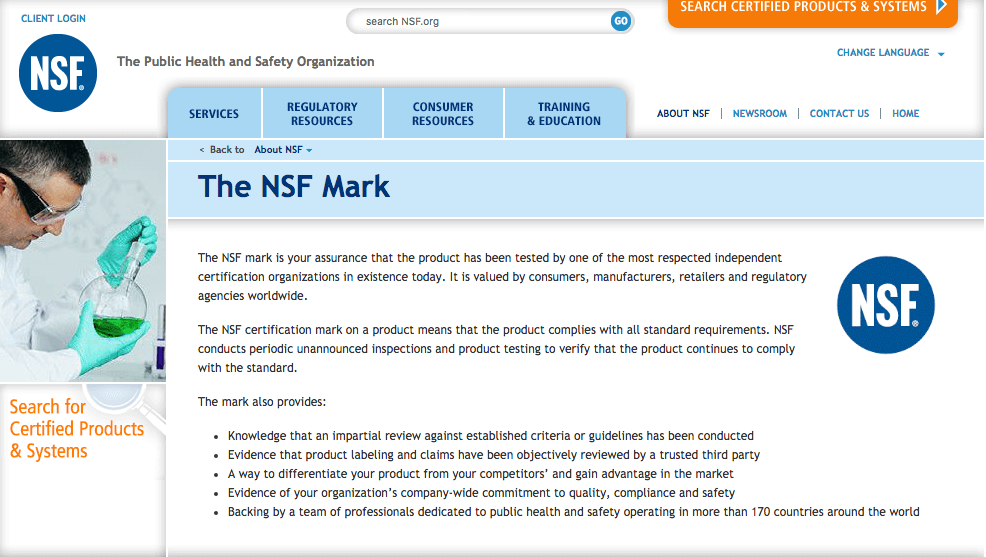
There are 12 different ratings for water treatment and filtration. Not all of them are applicable to under sink filtration. It is essential to read through the different certifications and decide which are important and relevant to you.
- NSF/ANSI 42
Filters are certified to reduce aesthetic impurities such as chlorine and taste/odor. These can be point-of-use (under the sink, water pitcher, etc.) or point-of-entry (whole house) treatment systems. - NSF/ANSI 53
Filters are certified to reduce a contaminant with a health effect. Health effects are set in this standard as regulated by the U.S. Environmental Protection Agency (EPA) and Health Canada. Both standards 42 and 53 cover adsorption/filtration which is a process that occurs when liquid, gas or dissolved/suspended matter adheres to the surface of, or in the pores of, an adsorbent media. Carbon filters are an example of this type of product. - NSF/ANSI 44
Water softeners use a cation exchange resin that is regenerated with sodium or potassium chloride. The softener reduces hardness caused by calcium and magnesium ions and replaces them with sodium or potassium ions. - NSF/ANSI 55
Ultraviolet treatment systems use ultraviolet light to inactivate or kill bacteria, viruses and cysts in contaminated water (Class A systems) or to reduce the amount of non-disease causing bacteria in disinfected drinking water (Class B). - NSF/ANSI 58
Reverse osmosis systems incorporate a process that uses reverse pressure to force water through a semi-permeable membrane. Most reverse osmosis systems incorporate one or more additional filters on either side of the membrane. These systems reduce contaminants that are regulated by Health Canada and EPA. - NSF/ANSI 62
Distillation systems heat water to the boiling point, and then collect the water vapor as it condenses, leaving behind contaminants such as heavy metals. Some contaminants that convert readily into gases, such as volatile organic chemicals, can carry over with the water vapor. - NSF/ANSI 177
Shower filters attach directly to the pipe just in front of the homeowner’s showerhead and are certified to only reduce free available chlorine. - NSF/ANSI 401
Treatment systems for emerging contaminants include both point-of-use and point-of-entry systems that have been verified to reduce one or more of 15 emerging contaminants from drinking water. These emerging contaminants can be pharmaceuticals or chemicals not yet regulated by the EPA or Health Canada. - NSF P477
These point-of-use filters reduce microcystin (toxins produced by blue-green algae) below the health advisory set by the EPA. - NSF P473
PFOA/PFOS water filters or systems are evaluated on their ability to reduce PFOA and PFOS in drinking water and to meet strict material safety and structural requirements as defined in NSF/ANSI 53. - NSF P231
Microbiological water purifiers are certified for health and sanitation based on the recommendations of the EPA’s Task Force Report, Guide Standard and Protocol for Testing Microbiological Water Purifiers (1987) (Annex B). - NSF/JWPA P72
Iodine radioisotope point-of-use treatment options are evaluated for reduction of all forms of iodine in drinking water. This protocol was developed in conjunction with the Japan Water Purifier Association (JWPA).
Based off the water supply hooked up into the house, I wanted NSF/ANSI 42, NSF/ANSI 53, and NSF/ANSI 401 for my under sink water filtration system
42 and 53 are pretty common for most filters. 401 also filters emerging contaminants not EPA regulated, such as chemicals from people flushing prescription medication down the toilet. 55 with UV filtration was a casual consideration, but not necessary, as it relates more towards bacteria and viruses.
Narrowing Down Filtration Options
By now, I’ve gotten a pretty good grasp on what to look for and what I need for my under sink water filtration system. Through some quick skimming of local availability plus an online selection, I determined a whole house filtration solution was no longer viable from a cost effective standpoint.
I calculated how much filtered water I would generally need by looking at my past receipts of plastic water bottle purchases, considering how much coffee and tea I make, boil pasta, etc. The amount of water wasn’t nearly as much as a whole house system would warrant, yet still more than what was comfortable for a counter top filter. The under sink water filtration system turned into a stronger and stronger solution.
Based on the NSF certification I sought, it became apparent price shouldn’t be a serious issue. The options narrowed themselves down pretty fast.
It was time to figure out which filters did had the appropriate certifications, then evaluate filter life and the water flow. Gallons per minute needed to be 0.7 or higher – less than that would take a longer time to fill containers, such as kettles and pots.
Primary Contenders for Under Sink Water Filtration
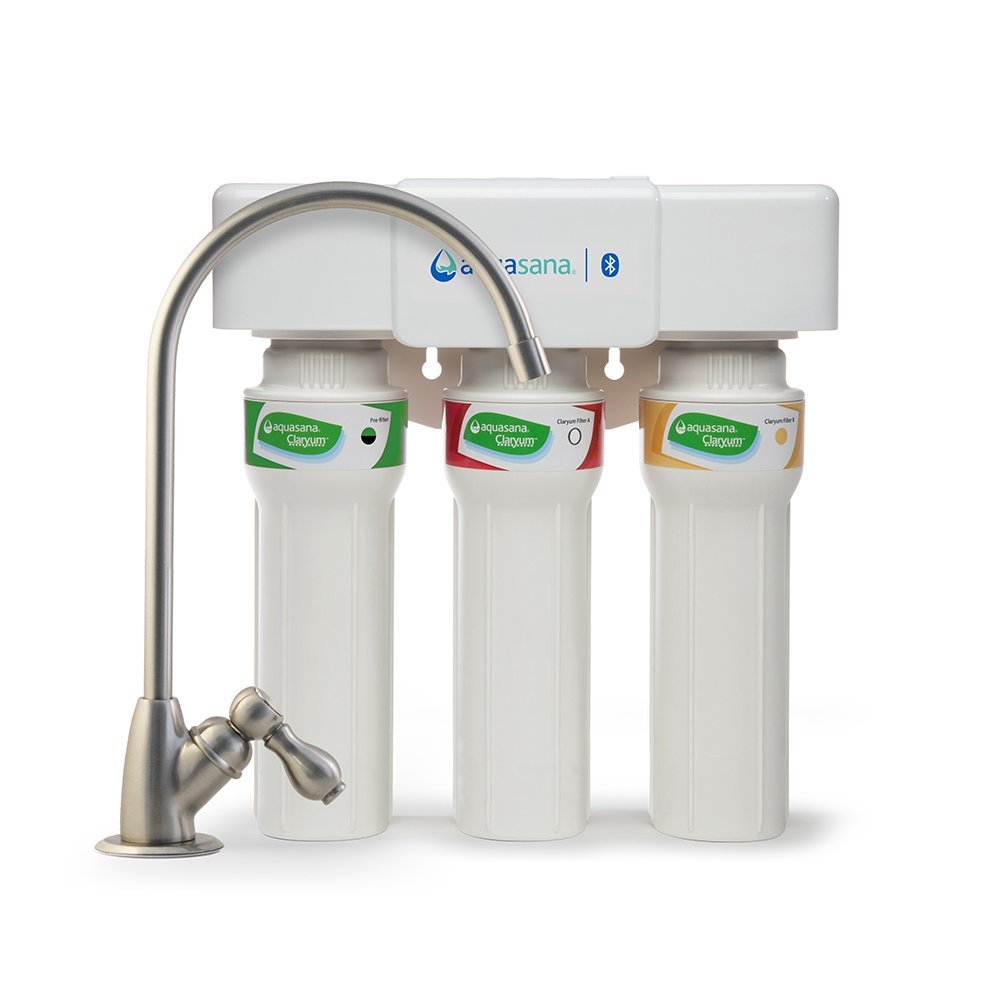
Aquasana 3-Stage AQ-5300+ – Around $180
NSF/ANSI certified to standards 42, 53, 401 +P473
Removes up to 99% of 77 contaminants including: chlorine taste, odor, and particulates, cryptosporidium, lead, asbestos, herbicides, detergents, ’emerging’ pesticides, pharmaceuticals, and other volatile organic chemicals. The first filter with P473 certification to remove PFOA (perfluorooctanoic acid) and PFOS (perfluorooctane sulfonate). NSF Certified to 42, 53, 401, and P473.
Aquasana AQ-5300+R 3-Stage Max Flow Under Sink Water Filter Replacement Cartridges – Around $0.08 per gallon.
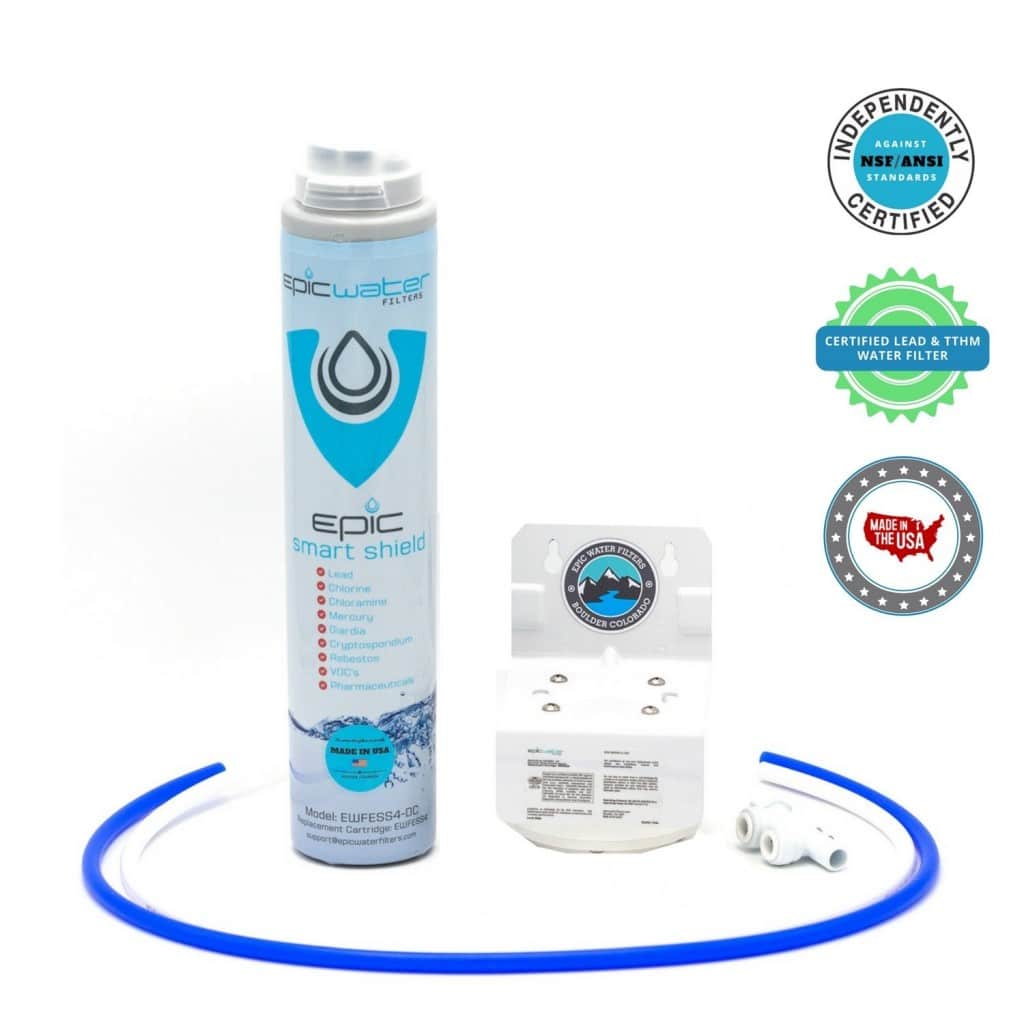
Epic Smart Shield – around $130
NSF/ANSI certified to standards 42, 53, and 401
Three different NSF/ANSI water filtration standards for removal of:
– Chlorine & Odors
– Heavy Metals
– Chemical Resistant Cysts Like Giardia and Cryptosporidium
– Organic chemicals like herbicides, pesticides and VOCs
– Trace Pharmaceuticals
all of which are unfortunately found in North American tap water.
While many other systems use coal-based media filters, the Epic Smart Shield filter uses organic ground-up coconut shells, making it more sustainable for our earth.
Replacement Filter for Epic Smart Shield Under Sink Water Filter System – around $0.19 per gallon.
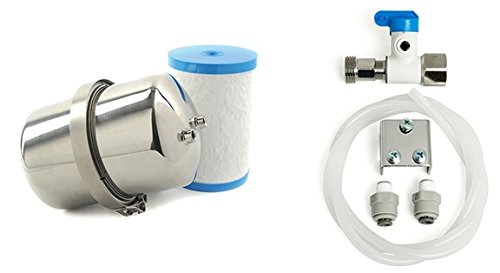
Multipure Aquaversa Model MP750 – Around $450
NSF/ANSI Certified to standards 42, 53 and 401.
Also certified by the State of California Department of Public Health Water Treatment Device Certificate Number 97 – 1294.
This drinking water system does not include a faucet. You may use your own faucet that accepts 1/4″ flexible tubing, or hook the system up to your refrigerator or any other custom installation.
The kit also includes the Adapta Valve, which connects to your cold water supply, along with 36″ of 3/8″ tubing to connect to the Adapta Valve.
For the version which includes a faucet, this is the full kit.
Genuine CB6 Multipure Replacement Filter – Around $0.09 per gallon.
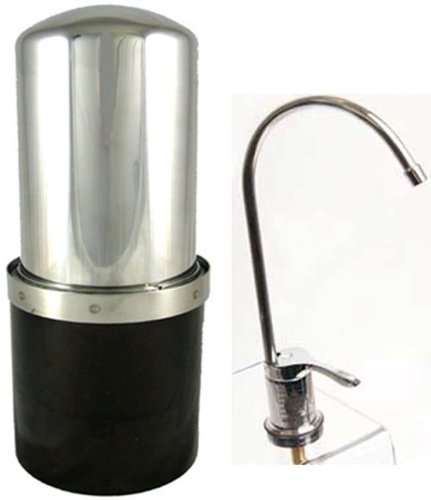
CB-VOC Water Filtration System – around $430.
NSF/ANSI certified to Standards 42, 53, and 401.
Durable, Stainless Steel Under counter Water Filter complete with attractive, ceramic-disk, designer brushed nickel faucet and all installation tubing and accessories.
The CB-VOC has a replaceable cartridge designed so that it can be easily changed. Some additional advantages: does not waste water, no electricity required, does not remove essential trace minerals that are beneficial to good health, and does not add salt or silver to the water. Certified performance to reduce Chlorine and Chloramine, Lead, MTBE, Mercury, Asbestos, VOCs, microorganisms, and much more. Size: Approx. 8″ Diam. x 10″ tall.
CBTech CBTVOC Replacement Water Filter Cartridge – Around $0.09 per gallon.
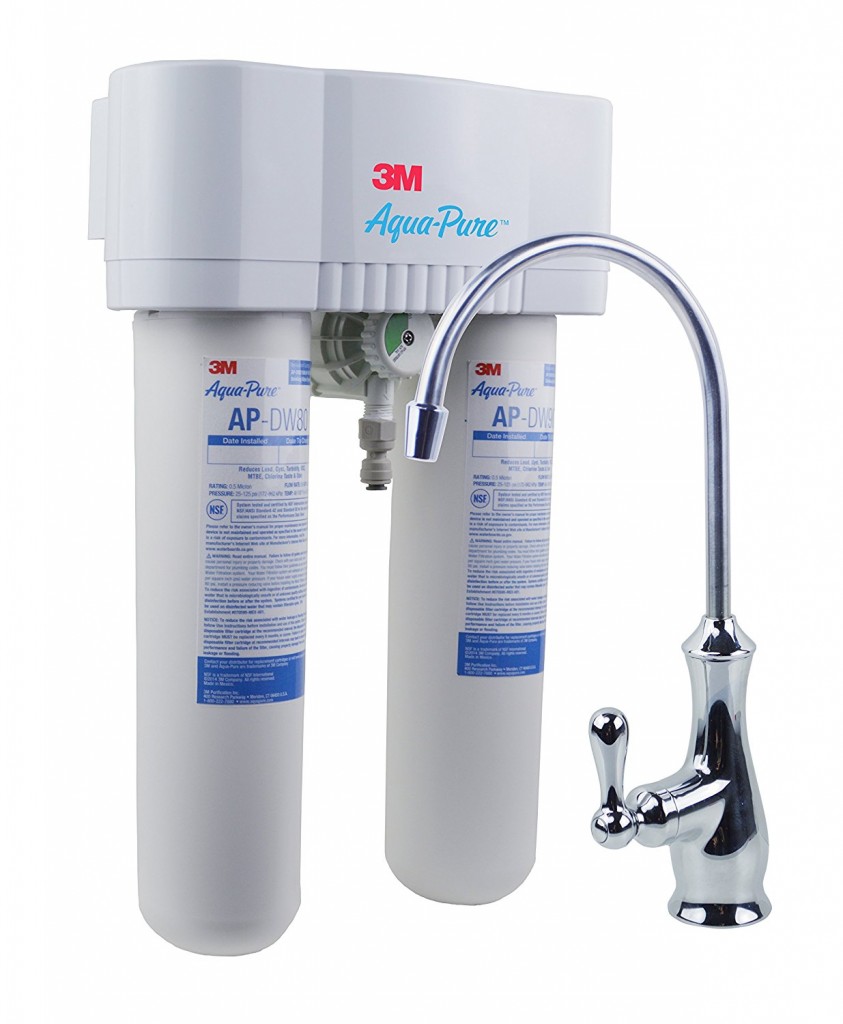
3M Aqua-Pure AP-DWS1000 – Around $210.
NSF/ANSI certified to Standards 42 and 53.
Aquapure compact under sink drinking water filter system (DWS1000) does not require a holding tank. Aqua-Pure Drinking Water System filters are typically used in the kitchen, bathroom, or bar for all cold water coming out of a normal faucet. They reduce dirt, rust, and sediment. They also reduce taste, odor, and chlorine for a fresh ingredient to all your drinking and cooking needs. No spill, no mess cartridge design and no special tools required. Reminds you when to replace filter and shuts off water at the filter, no need to search for main.
DIY note: don’t use the adapter they provide, get this instead: JG Speedfit ASVPP1LF 3/8-Inch by 3/8-Inch by 1/4-Inch Angle Stop Adapter Valve JG Speedfit ASVPP1LF 3/8-Inch by 3/8-Inch by 1/4-Inch Angle Stop Adapter Valve – I ignored this comment initially until I was in the middle of the install and found out why. Yup, just order with the system if you get this model.
3M Aqua-Pure Under Sink Replacement Water Filter – around $0.11 per gallon.
Installing the Under Sink Water Filtration System
These are a couple tips I gleaned when installing your filtration, whether doing so as a DIY or hiring a plumber. I personally did the install myself, but would certainly ensure a hired plumber adhered to high standards. I’ve found many may not be familiar with the intricacies of this kind of system.
- Install a shut off valve for the filtration, separate from the sink’s cold water. If something goes wrong with the filter, you can easily shut off the water to it while you wait for a warranty part or repair without having to go without cold water in the sink.
- When using additional parts for the valve or other aspects of plumbing under the sink, take into consideration the quality. In the above systems, a high grade of plastic is used. Don’t settle for the same quality you’d use for your outdoor irrigation.
- Some of the parts shipped with the different systems suck. The one I ended up choosing has a very soft plastic adapter I ended up replacing with brass.
- Pay attention to details in the installation manual. Double check with product manuals on the website, which may have supplemental information and tips.
- Work with care and diligence. You are handling some expensive and delicate parts. A clean work are and deliberate actions go a long ways.
Some other tips:
Check with your local government water resources department. They might have rebates for the under sink water filtration system you buy. You can also find performance data, which varies by state.
Some water districts will provide a report regarding the availability of drinking water that the public system provides to consumers. This is a good gauge to figure out which filters and NSF certifications to look for.
Pin This Post!
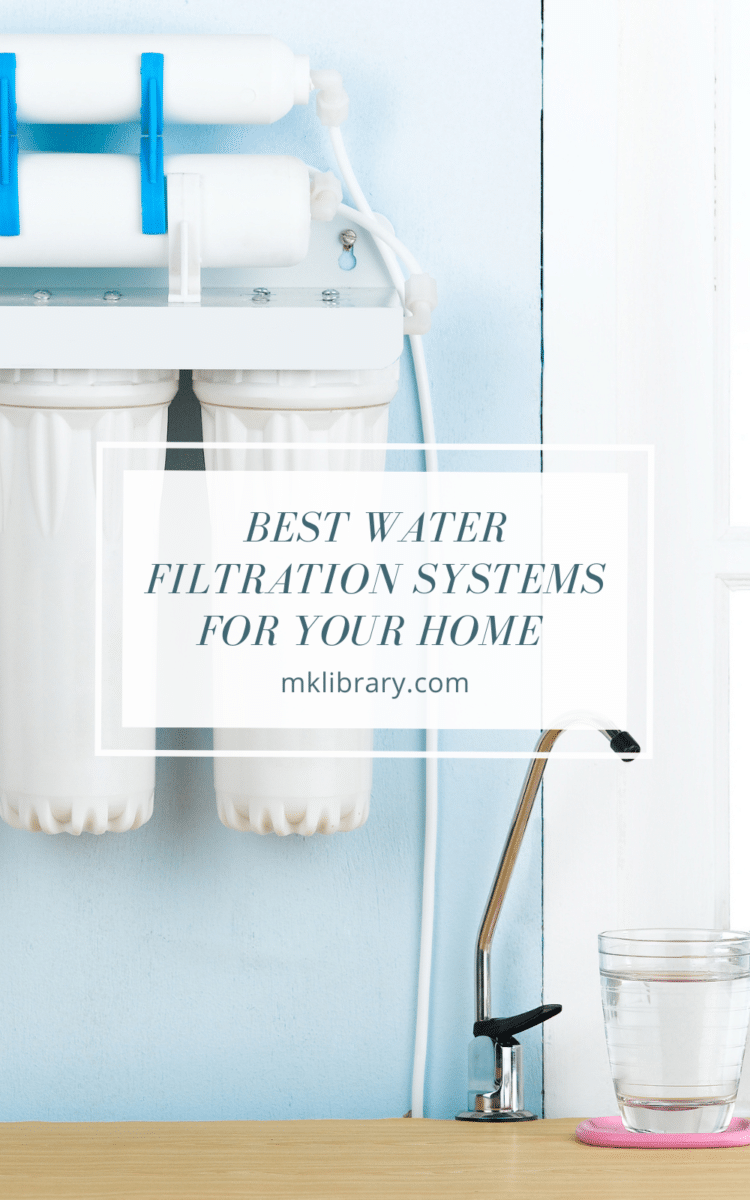
- About the Author
- Latest Posts
I strive to paint vivid landscapes with my words, bringing the magic of far-off lands and enchanting aromas to life for my readers. Combine passion for exploration and the art of gastronomy in an unending ode to the senses. When I’m not traversing the globe, I find solace in the earth beneath my fingertips, tending to my garden and working on projects around my verdant oasis. MK Library serves as a beacon, guiding fellow travelers and homebodies alike to embrace sustainability, nurturing both our planet and our souls with purpose. Full Bio.


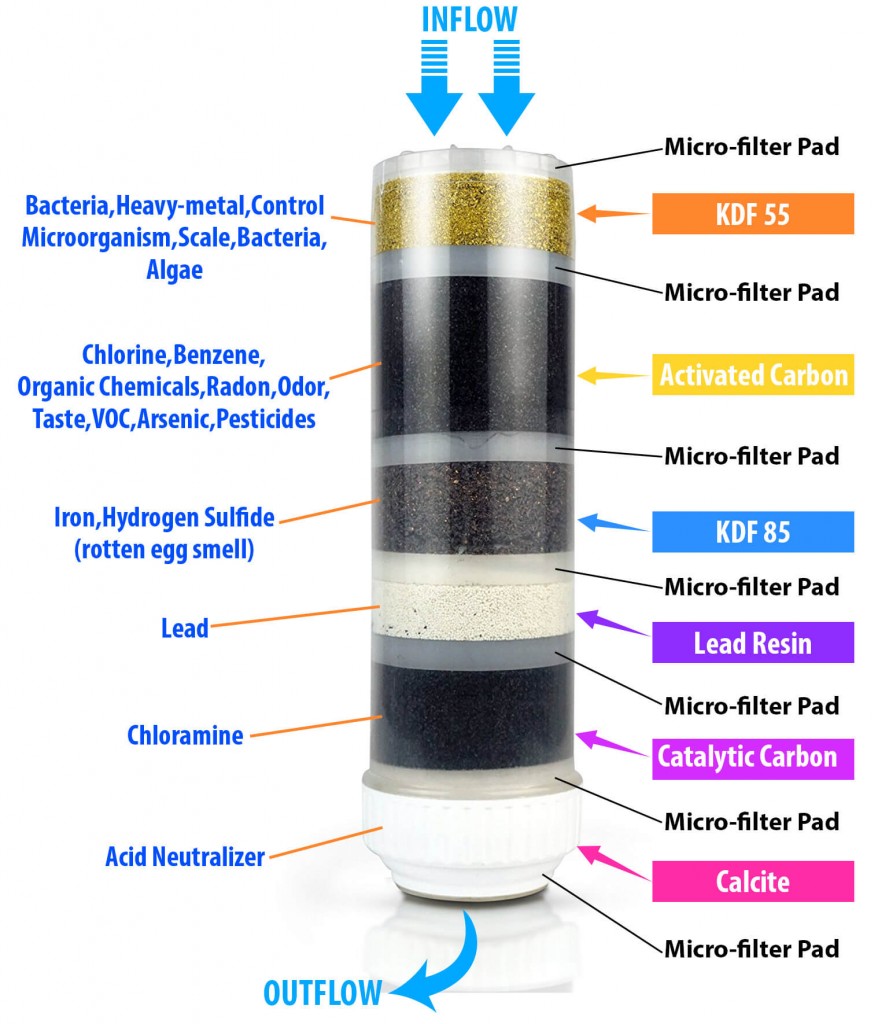

A very informative information about the under sink water filtration system. We are looking for a Water treatment Solutions for our filtration system. Your information helps a lot. Thankyou again.
Wondering which system you chose to use in your home? I also live in the City of Sacramento and have gotten my research down to a couple of those under sink filters you selected here- wondering how to pick and what’s worked best for you with our water here. Thanks!
Hi Ingrid, I’m currently using the 3M Aqua-Pure AP-DWS1000 listed in this post. I’ve been really happy with it. I used a water testing kit after installing it and remember the numbers being improved from the tap by a little, but also my tap is currently at a really good quality. This is the tester I’ve used: https://amzn.to/34YHqQr
Hi Michael!
This has been super helpful as I’m assessing what system is best to install in my apartment! Thanks for all the research!
I’m curious if you installed the 3M Aqua-Pure AP-DWS1000 with the included faucet or did you use the separate adapter to run the filter directly through your existing faucet?
This seems like the best of the filters on here, but I’m unclear if it’s possible to run straight to the main supply lines! My alternate is the Epic Smart Shield filter which advertises to do such a thing (but is more costly!)
Hi Michael!
This has been super helpful as I’m assessing what system is best to install in my apartment! Thanks for all the research!
I’m curious if you installed the 3M Aqua-Pure AP-DWS1000 with the included faucet or did you use the separate adapter to run the filter directly through your existing faucet?
This seems like the best of the filters on here, but I’m unclear if it’s possible to run straight to the main supply lines! My alternate is the Epic Smart Shield filter which advertises to do such a thing (but is more costly!)
Hi Claire,
I used the included faucet. If you run through your main supply, you’re using the filtered water for washing dishes/etc as well, and you’ll also notice water pressure will be terrible for anything other than filling your water drinking glasses. I know it can be done, but if you want the existing faucet filtered, you would probably need a whole house system or something bigger than what fits under the sink.
What an informative article about under-sink water filtration systems. I’m so glad I found it! My husband and I have been talking about the need to have a system for our kitchen, and now we’re digging in and doing our research. Making sure our family has access to clean drinking water is an important health priority. Your product recommendations and advice for installation have been very helpful! Thank you so much.
We are currently having leaking sink issues. When we actually get to fixing it tI think this is a great idea. Saves money and the environment. Surprised you don’t see it advertised as much.